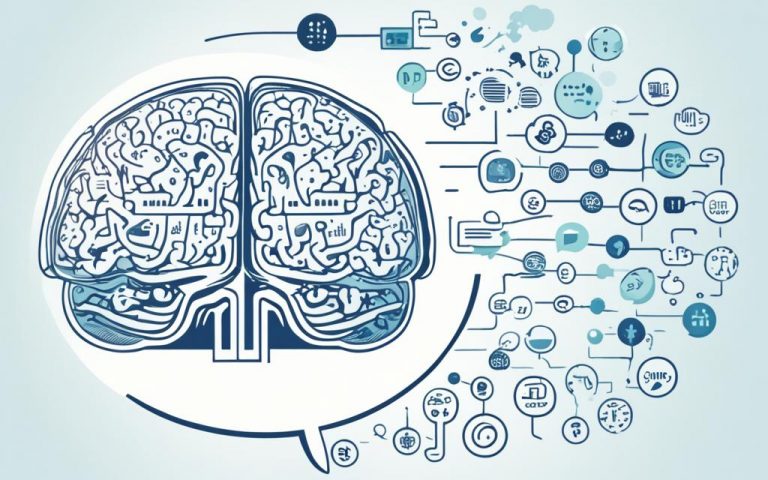Best Autism Courses for Teachers Online – Enhance Your Skills
Our e-learning modules on autism have been written and designed by autistic people and other autism specialists. These modules are unique in design, innovative in delivery, and offer knowledge direct from autistic individuals. They are designed to provide educators with a comprehensive understanding of autism at their own pace and convenience. The modules include features such as reflective questions, film clips, quizzes, animations, and learner activities. They take approximately 60-90 minutes to complete and are accessible for learners using assistive technologies. Upon completion, learners receive a certificate that can be used for their Continuing Professional Development (CPD) recording forms.
Key Takeaways:
- Enhance your skills in supporting autistic individuals.
- Learn from autistic people and autism specialists.
- Flexible, self-paced learning at your convenience.
- Accessible for learners using assistive technologies.
- Receive a certificate for your Continuing Professional Development.
Understanding Autism – Definition and Experience
Welcome to the second section of our online autism courses for teachers! In this module, we delve into the fundamental aspects of understanding autism, focusing on its definition and the unique experiences of autistic individuals.
Autism is a neurodevelopmental condition that affects how a person perceives and interacts with the world around them. By gaining a deeper understanding of autism, educators can create enabling environments that support the learning and development of autistic students.
This module is designed to provide insights from autistic people themselves, ensuring that you can benefit from their first-hand experiences and perspectives. By learning directly from autistic individuals, you can better recognize the strengths and challenges faced by autistic students, enabling you to tailor your teaching approaches accordingly.
Throughout this module, you will explore various topics, including the definition of autism, the experiences of autistic people, and the importance of creating enabling environments in educational settings. By the end of the module, you will have gained a comprehensive understanding of autism and be equipped with practical strategies to effectively respond to the needs of autistic students.
Now, let’s dive into the fascinating world of autism and discover how we can make a positive impact on the lives of autistic individuals in our classrooms.
Communication Differences in Autism
This module delves into the fascinating topic of communication differences in autistic individuals. Understanding these differences is essential for educators to effectively connect and engage with autistic students in educational settings. By recognizing and adapting to their unique communication styles, you can create an inclusive and supportive learning environment tailored to their needs.
Autistic individuals may experience challenges in social communication, such as difficulty with nonverbal cues, interpreting tone of voice, and maintaining eye contact. These differences can sometimes lead to misunderstandings, frustration, and barriers to successful communication. However, it’s important to remember that communication differences do not reflect a lack of intelligence or capability.
One effective approach to overcoming these barriers is to incorporate visual supports and aids. Visual schedules, picture cards, and visual cues can enhance understanding and facilitate communication. Breaking down information into smaller, manageable chunks and providing clear instructions using visual aids can minimize confusion and improve communication outcomes. It’s also important to provide ample time for processing information and allow individuals to express themselves in their preferred mode, whether it’s through written communication, using assistive technology, or other alternative methods.
Barriers to Communication in Autism
In order to foster successful communication, it’s crucial to identify and address the barriers that may hinder effective interaction. These barriers may include sensory sensitivities, difficulties with understanding and expressing emotions, and challenges in social interaction. By understanding and accommodating these barriers, educators can create an environment that supports and encourages communication.
“Communication is not just words. It’s also about listening with your eyes and heart.”
Strategies for Successful Communication
Here are some practical strategies to enhance communication with autistic individuals:
- Use clear and concise language, avoiding metaphors, idioms, and ambiguous statements.
- Allow extra processing time and be patient when waiting for a response.
- Provide visual supports, such as written instructions or visual schedules, to reinforce verbal communication.
- Practice active listening by giving your full attention and acknowledging their perspective.
- Encourage self-expression through alternative modes of communication, such as writing or using assistive technology.
- Adapt your communication style based on the individual’s preferences and needs.
By understanding and adapting to the communication differences in autism, educators can build stronger connections with autistic individuals, foster inclusivity, and promote successful learning experiences.
| Barriers to Communication | Strategies for Successful Communication |
|---|---|
| Sensory sensitivities | Use visual supports and provide a calm and sensory-friendly environment. |
| Difficulties with understanding and expressing emotions | Teach emotional vocabulary and provide tools for self-expression. |
| Challenges in social interaction | Teach social skills explicitly and provide opportunities for social practice. |
Understanding and embracing the communication differences in autism is a vital step towards creating an inclusive and supportive educational experience for all students. By implementing effective strategies and breaking down communication barriers, educators can empower autistic individuals to thrive and reach their full potential.

Sensory Differences in Autism
Autism is characterized by unique sensory experiences that can significantly impact individuals with autism. Understanding and effectively supporting these sensory differences is crucial for creating inclusive environments. This module explores the various sensory differences that autistic individuals may experience and provides strategies for offering effective support.
Autistic individuals often have heightened or diminished sensitivity to certain sensory stimuli, such as sounds, lights, textures, or smells. For example, a seemingly insignificant sound like a clicking pen or a fluorescent light buzzing can be overwhelming or distressing for someone with autism. On the other hand, they may seek out certain sensations, such as spinning or rocking, to help regulate their sensory input.

These sensory differences can have a profound impact on the daily lives of autistic individuals. It can lead to sensory overload, anxiety, meltdowns, or difficulties with attention and concentration. Effective support entails creating sensory-friendly environments that minimize overwhelming stimuli and provide appropriate sensory input.
“Understanding and accommodating sensory differences is essential in enabling autistic individuals to thrive,” says Dr. Emma Wilson, a leading expert in autism.
By creating a calm and predictable environment, using visual supports, and offering sensory breaks, we can help autistic individuals regulate their sensory experiences and enhance their overall well-being.
| Common Sensory Differences in Autism | Support Strategies |
|---|---|
| Hyper- or hypo-reactivity to stimuli | Implement sensory breaks and provide a designated quiet space |
| Overwhelm in crowded or noisy environments | Use noise-cancelling headphones or ear defenders |
| Sensitivity to certain textures or clothing | Offer sensory-friendly clothing options and provide alternatives for activities involving uncomfortable textures |
| Difficulty with transitions and changes | Provide visual schedules and prepare autistic individuals in advance for any changes |
Sensory differences in autism are unique to each individual, so it’s important to recognize and respect their specific needs. By creating inclusive environments and offering effective support, we can help autistic individuals navigate the sensory world and promote their overall well-being and success.
Supporting Autistic Individuals and their Families
When it comes to supporting autistic individuals, it’s crucial to understand the common difficulties they and their families face. By gaining insight into these challenges, educators can develop effective approaches that provide comprehensive support. With knowledge and understanding, you can make a significant positive impact on the lives of autistic individuals in your classroom.
Autistic individuals often struggle with social communication and interaction, sensory sensitivities, and repetitive behaviors. Supporting them requires a tailored approach that acknowledges their unique needs and strengths. By fostering a supportive and inclusive environment, you can create a space where they feel understood and valued.
For families of autistic individuals, the journey can often be overwhelming. They may face challenges related to accessing appropriate services, advocating for their child’s needs, and understanding their child’s abilities and limitations. As an educator, you play a crucial role in providing guidance and support to these families. By building strong partnerships and offering resources and information, you can empower families in their journey.
“Education is not the filling of a pail, but the lighting of a fire.”
– William Butler Yeats
Effective approaches for supporting autistic individuals and their families include collaboration with other professionals, individualized teaching strategies, and creating visual supports. Collaboration allows for a holistic understanding of the individual’s needs and ensures that everyone involved is working towards the same goals. Individualized teaching strategies cater to the specific strengths and challenges of each autistic individual, allowing for personalized learning experiences. Visual supports, such as visual schedules and social stories, can help individuals navigate daily routines and social situations with greater ease.
By prioritizing support for autistic individuals and their families, you can create an inclusive and empowering educational environment. Understanding the common difficulties they face and implementing effective approaches will not only enhance their learning experience but also contribute to their overall well-being and success.
| Common Difficulties | Effective Approaches |
|---|---|
| Social communication and interaction | Individualized teaching strategies |
| Sensory sensitivities | Collaboration with professionals |
| Repetitive behaviors | Visual supports |
Conclusion
By enrolling in these online autism courses for teachers, you can enhance your knowledge and skills to effectively support autistic individuals in educational settings. The modules cover a wide range of topics, including understanding autism, communication differences, sensory experiences, and supporting families. These courses are designed to be flexible, interactive, and provide learners with a certificate of completion.
Throughout the modules, you will gain insights from autistic individuals and other autism specialists, ensuring a comprehensive understanding of autism. The innovative design and delivery of these courses offer a unique learning experience, allowing you to learn at your own pace and convenience. The inclusion of features such as reflective questions, film clips, quizzes, animations, and learner activities enhances your engagement and knowledge retention.
Upon completion of the modules, you will receive a certificate that can be used for your Continuing Professional Development (CPD) recording forms. This recognition of your commitment to enhancing your skills in supporting autistic individuals will contribute to your professional growth. Take the opportunity to make a positive impact on the lives of autistic individuals in your classroom by enrolling in these online autism courses for teachers today.
FAQ
Can anyone enroll in these online autism courses for teachers?
Yes, these courses are designed for teachers and educators who want to enhance their knowledge and skills in supporting autistic individuals in educational settings.
Are these courses suitable for educators at different levels of experience?
Absolutely. Whether you’re a beginner or have years of experience working with autistic individuals, these courses provide valuable insights and strategies to effectively support autistic individuals in your classroom.
Can I complete the modules at my own pace?
Yes, these modules are designed to be flexible, allowing you to complete them at your own convenience. You can access the materials and complete the modules whenever and wherever you want.
How long does each module take to complete?
Each module takes approximately 60-90 minutes to complete. You can choose to complete them in one sitting or break them up into smaller sessions.
Is there a refund policy if I am not satisfied with the courses?
We do not offer refunds for these courses. However, if you have any concerns or issues, please contact our support team, and we’ll be happy to assist you.







